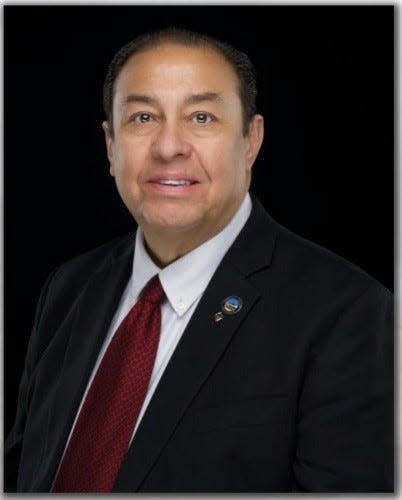Regional transportation plan critical to Imperial Valley’s future
Imperial County has a long history of feeding the nation and, more recently, as a vital port of entry for Southern California’s global supply chain network. Moving forward, advancements in geothermal energy and lithium extraction will create thousands of jobs and provide new economic opportunities for our communities and our residents.
Ensuring that we’ve got the transportation infrastructure to support dynamic change must be a priority for policymakers and planners, which is where Connect SoCal 2024 comes into play.
This plan is the updated Regional Transportation Plan/Sustainable Communities Strategy, recently unveiled in draft form by the Southern California Association of Governments, which provides guidance for how the Imperial Valley and the six-county SCAG region can thrive in the decades ahead.
Among the $750 billion in transportation improvements featured in the plan are 86 projects specific to Imperial County designed to reduce travel delays, improve air quality and enhance the quality of life for a county expected to grow by nearly 30,000 people by 2050.
Included are enhancements to State Route 111 ($999 million) and Forrester Road from Interstate 8 to State Route 78 ($307 million), expressway improvements on State Route 115 ($232 million), expansion of the Calexico East Port of Entry ($32 million) and interchange improvements on Interstate 8 at State Route 186 ($44 million).
Every four years, SCAG planners analyze data and work with local communities to develop Connect SoCal 2024, part of its role as the metropolitan planning organization for a region that includes 191 cities and a population of nearly 19 million.
Notable in the 2024 plan are new strategies for addressing the housing crisis, adapting to climate change and investing in underserved communities.
For Imperial County specifically, investments detailed in Connect SoCal 2024 would reduce per-person traffic delays by 38% by 2050, reduce daily vehicle-miles traveled per capita by 3.2% and generate about 600 jobs, directly and indirectly, each year. If fully implemented across Southern California, the 25-year plan would create 480,000 jobs per year, generate $2 in economic benefits for every $1 spent and help Southern California meet its state-mandated greenhouse-gas emissions reduction target of 19% by 2035.
These are big numbers at a time when so much is at stake for the region as a whole, especially here in Imperial County. At SCAG’s recent Southern California Economic Summit, economist Michael Bracken talked about the high hopes for our valley with regard to geothermal and rare-mineral extraction. The county produced more than 3,400 megawatts of solar-generated electricity in 2022, enough to power 1 million homes, with another 1,600 MW of solar power and 4,200 MW of battery storage under construction or in the entitlement process. In addition, 11 geothermal and lithium extraction projects are in the permitting process, representing $10 billion in new economic investment.
All that investment, along with continued growth in the agricultural industry, has helped stabilize a local economy that has struggled with high unemployment. Investing in transportation infrastructure is critical to maximize these opportunities.
In April, the plan will go to SCAG’s Regional Council, and then onto the state and federal governments for their approval. Its adoption is vital to our future, ensuring that we’re able to grow the right way and fulfill our own piece of the California dream.
Luis A. Plancarte is the chairperson of the board of the Imperial County board of supervisors and a member of the Southern California Association of Governments’ Regional Council. He can be reached at LuisPlancarte@co.imperial.ca.us.

This article originally appeared on Palm Springs Desert Sun: Regional transportation plan critical to Imperial Valley’s future
